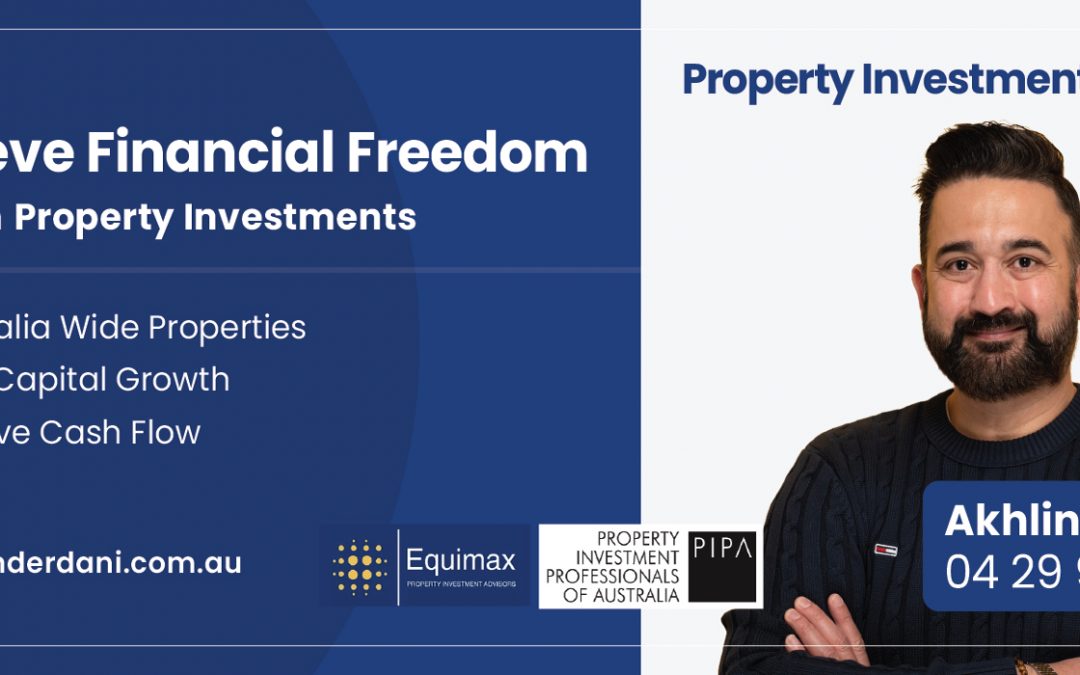Melbourne’s Property Market in 2024: Strategic Insights for Investors
In 2024, Melbourne’s property market promises an exciting transformation, offering an array of opportunities for astute investors. As property investment advisors, Team Akhlinder Dani brings you this comprehensive guide, enriched with credible data and expert insights. We’ll delve into significant trends, market forecasts, and strategic considerations for navigating the Melbourne real estate landscape in the coming year.
Current State of the Melbourne Property Market
Market Insights and Forecasts
The latest data from the NAB Residential Property Survey provides compelling insights into Melbourne’s property market. Rising home values are attributed to increased immigration and a growing belief that interest rates are nearing their peak. Immigrant inflows are projected to exceed 400,000 in 2023, far surpassing the typical annual average of around 180,000. This demographic shift is a key driver behind Melbourne’s surging residential property values.
In a remarkable turnaround from earlier projections, NAB now forecasts a 9.4% increase in home values over the next 18 months. This prediction starkly contrasts with the anticipated 21.8% decline in house prices by the end of 2023. The Reserve Bank of Australia is expected to raise interest rates by 50 basis points to 4.6% by September, followed by a one-year hiatus.
Additionally, Knight Frank’s ‘Australian Residential Review Q1 2023’ predicts a 7% drop in property values by the end of 2023, followed by 4% and 6% increases in the subsequent two years. The research also points to a 14% growth in rental rates throughout 2022, driven by a residential rental vacancy rate of just 1.7%.
Supply and Demand Dynamics
Melbourne’s property market is currently delicately balanced between supply and demand. The city’s rapid population growth, driven by immigration and a burgeoning workforce, has created consistent housing demand. Data from the Real Estate Institute of Victoria (REIV) underscores this population expansion.
On the supply side, increased construction activity, particularly in high-rise developments, is expanding housing stock. Nevertheless, the market remains resilient, with demand spanning various property types, from apartments to single-family homes.
Property Price Trends
Of paramount importance is the projection of a significant surge in Melbourne’s home values in the coming year. According to the National Australia Bank (NAB), residential property prices are poised to increase by approximately 10% by the close of 2024. This outlook follows a 2% growth in 2023, accompanied by a substantial 7.4% uptick in 2024. Over the span of 18 months, this translates to a 9.4% surge, adding roughly $75,482 to the median housing value of $803,000 recorded in July 2023 (PropTrack Home Price Index).
Key Trends Shaping the Melbourne Property Market in 2024
1. Affordability Remains a Challenge
Despite the promising trajectory of property prices, the spectre of affordability continues to loom over Melbourne. The Demographia International Housing Affordability Survey consistently ranks Melbourne among the least affordable cities globally. This affordability gap presents a considerable challenge, particularly for first-time buyers and individuals with lower incomes.
2. Suburban Revival Continues
The resurgence of Melbourne’s suburbs, fuelled by the pandemic-induced trend of remote work, continues to gather momentum. Families and individuals are seeking spacious homes and a quieter lifestyle, underscoring the enduring appeal of suburban living.
3. Sustainable and Green Properties Gain Traction
Sustainability has emerged as a critical factor in real estate investment decisions. In 2024, demand for buildings with energy-efficient features is predicted to increase due to Melbourne’s prominence in green construction projects.
4. Regulatory Changes Impacting Investment
Investors must remain watchful and knowledgeable about regulatory changes that may affect the real estate market. Melbourne has implemented a number of steps to address housing affordability concerns, including stamp duty discounts and limits on foreign investors.
Investment Strategies for Melbourne in 2024
1. Diversification:
Diversifying your property portfolio across multiple suburbs and property kinds is a smart way to spread risk and capitalise on different market possibilities. This is particularly important given the variety of trends in Melbourne’s neighbourhoods and property segments. While certain inner-city districts had considerable price growth in 2023, suburban areas saw consistent demand for family houses. A well-diversified portfolio can assist to reduce market volatility and boost long-term gains.
2. Research and Due Diligence:
In-depth research is the foundation of a successful real estate investment. It is critical to examine local market conditions, price trends, and rental yields. CoreLogic’s Home Value Index data demonstrates Melbourne’s market resiliency in the face of external pressures. Consultation with real estate professionals and financial consultants can also provide significant insights into market nuances, such as the increased demand for houses with home office spaces.
3. Long-Term Perspective:
Real estate investments thrive when viewed through a long-term lens. While short-term gains are possible, holding investments over an extended period maximises their potential. Historical data from REIV underscores Melbourne’s property market’s consistent long-term appreciation. This enduring growth trajectory positions real estate as a resilient and rewarding asset class over time.
4. Budgeting and Financing:
Creating a comprehensive budget that considers acquisition costs, ongoing expenses, and contingencies is paramount. As the Demographia International Housing Affordability Survey highlights, Melbourne’s property market challenges investors with affordability concerns. Data from the National Australia Bank (NAB) underscores the influence of interest rates on Melbourne’s residential value growth. To safeguard investments, fixed-rate mortgages offer protection against sudden interest rate hikes.
5. Sustainable Investments:
Embracing sustainability in your investment strategy is both environmentally responsible and financially advantageous. Melbourne’s growing emphasis on green and energy-efficient properties is evident in rising demand and higher rental yields. Sustainable features, such as solar panels and energy-efficient appliances, can reduce operational costs and enhance overall return on investment. This aligns with broader societal and regulatory goals, making sustainability a strategic choice for long-term stability and growth.
The way forward
With Melbourne’s property market poised for growth in 2024, investors have the potential to achieve substantial returns. However, affordability challenges persist, and regulatory changes must be monitored closely. By diversifying portfolios, conducting thorough research, adopting a long-term perspective, managing budgets effectively, and embracing sustainability, investors can seize the opportunities presented by Melbourne’s dynamic real estate landscape. The data-backed forecast of a 10% property price surge by NAB, alongside insights from Knight Frank, underscores the resilience and potential of the Melbourne property market.
As property investment advisor, Team Akhlinder Dani encourages investors to leverage these insights to make informed decisions and capitalise on the evolving property market in 2024.

